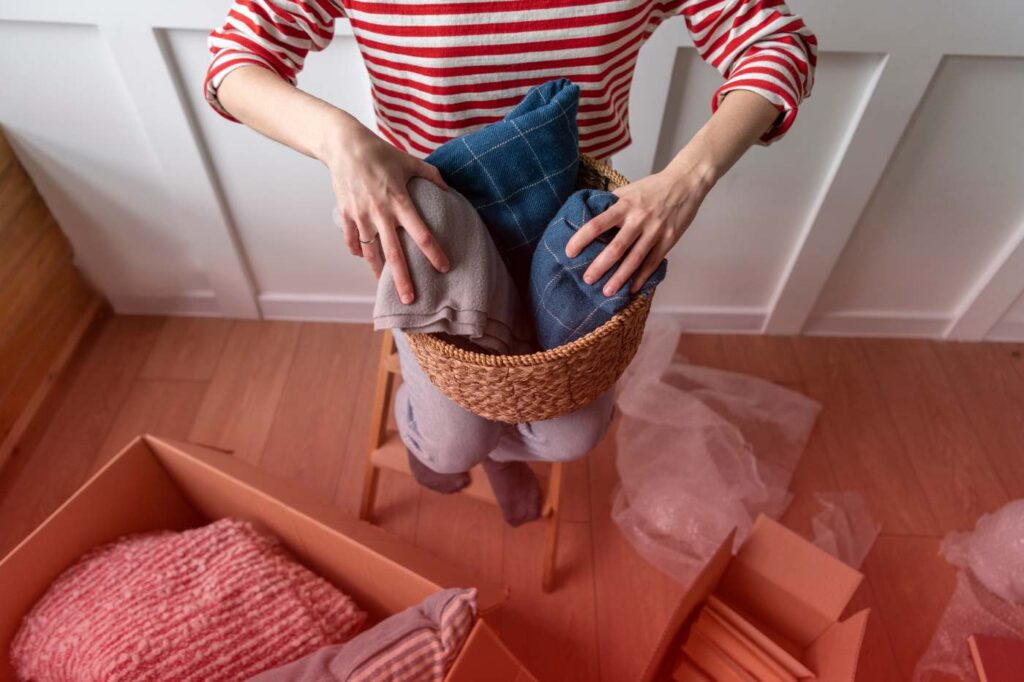Relocating is rarely simple. Even when you’re excited about a fresh start, the process of moving can quickly become overwhelming. In fact, nearly 60% of Canadians report high stress levels when moving, with 28% saying it’s even more stressful than planning a wedding, quitting smoking, or starting a family.
Between organizing your belongings, coordinating schedules, and trying not to forget anything important, stress tends to build before you’ve even packed your first box.
But moving doesn’t have to be chaotic. With a structured plan and a few practical strategies, you can stay in control and actually enjoy the process.
So these are the eight tried-and-true ways to make relocating feel less like a burden—and more like the positive transition it should be.
1. Set a Realistic Budget Before You Do Anything
Stress often begins when costs start piling up unexpectedly. That’s why the very first step to a smoother move is setting a realistic budget. Consider all the major and hidden expenses—packing supplies, transportation, labor, storage, insurance, and even setup costs for your new place.
Once your budget is in place, create a checklist based on your timeline. Assign deadlines to key tasks like hiring movers, packing specific rooms, and changing your address. Staying disciplined with your timeline and finances will help you avoid last-minute stress and surprise costs.
2. Declutter Early to Lighten the Load

Before you pack a single box, take time to declutter. Go through your belongings and sort them into four categories: keep, donate, sell, or discard. The less you bring with you, the less you’ll have to pack, carry, and unpack later.
This isn’t just about reducing boxes—it’s about starting fresh in your new home without unnecessary clutter. You’ll also save on moving costs, especially if you’re being charged by volume or weight.
Since long-distance moves can soar to over CAD 2,300 for just a two-to-three-bedroom home, decluttering can literally lighten your load and your bill
Pro tip: Start with storage areas like closets, the basement, or the garage—they often hold the most forgotten items.
3. Hire Professional Movers You Can Trust
Nothing reduces relocation stress like having expert help. A trusted moving company handles the heavy lifting—literally and figuratively—so you can focus on what matters most.
Hiring professional movers not only saves time but also prevents injuries and damage to your belongings. From loading and transport to unloading and placing furniture, they take care of the logistics with efficiency.
For extra assurance, let Asr Moving handle the heavy lifting. As a local mover in Edmonton, we’ve been helping families and individuals move smoothly across Edmonton, Calgary, Leduc, Sherwood Park, Spruce Grove, and Beaumont for over 5 years. Our professional, family-first approach means we treat your move like it’s our own.
4. Start Packing in Small, Manageable Sessions

Trying to pack your whole house in one weekend? That’s a fast track to burnout. Instead, begin packing 2 to 3 weeks before your moving day and break it down into smaller, more manageable sessions.
- Start with rooms and items you don’t use daily, like storage closets, guest rooms, or seasonal decor.
- Work your way toward everyday essentials as moving day approaches.
- Set realistic daily packing goals (e.g., one room or category per day) to stay on track without feeling overwhelmed.
Packing bit by bit helps maintain your routine and reduces last-minute chaos
5. Avoid Overpacking to Prevent Damage
It might feel efficient to stuff as much as possible into fewer boxes, but overpacking creates problems. Boxes that are too heavy can break open, damage contents, or even injure you or your movers.
Follow these packing guidelines for safer transport:
- Keep each box under 50 lbs.
- Place heavier items at the bottom and lighter ones on top to avoid crushing.
- Reinforce the bottom seams of boxes with extra packing tape.
- Label each box clearly with its room destination and a brief list of contents.
Balanced, clearly labeled boxes make loading, unloading, and unpacking a lot smoother
6. Protect Fragile Items with Extra Padding

Breakables need extra attention. Don’t rush this part—give your fragile items the protection they deserve.
- Wrap delicate items in bubble wrap, packing paper, or soft materials like towels and blankets.
- Use dish packs or sectioned boxes for plates, glasses, and ceramics.
- Always label boxes with “FRAGILE” and mark which side should face up.
- Keep fragile items separate from heavy or oddly shaped objects to prevent accidents during the move.
The extra time spent packing with care can save you from the heartbreak (and expense) of broken valuables.
7. Photograph Your Setup Before Disassembly
Before you begin taking apart your furniture and electronics, take clear photos of how everything is set up. This step will save you time and confusion later, especially when reconnecting cables or reassembling complex furniture. Make sure to label all cords, screws, and hardware, then place them in individual ziplock bags.
For added convenience, tape these bags directly to the corresponding item or store them in a clearly marked box. This small effort can make reassembly in your new home much smoother and less frustrating.
8. Have a Moving Day Game Plan

The big day is here, and having a clear plan will make a huge difference.
Assign roles in advance:
- Who supervises the movers?
- Who directs where boxes go?
- Who keeps fragile items in sight?
Pack a moving day essentials bag with:
- Snacks and water
- Basic tools (screwdriver, scissors, tape)
- Phone charger and important documents
- Toilet paper and cleaning wipes
If you have kids or pets, arrange for someone to look after them to avoid distractions.
Planning ahead reduces your mental load and helps everything run like clockwork, so you can focus on settling into your new place with less stress.
Wrapping Up
With a solid budget, a decluttered space, smart packing habits, and a reliable team by your side, your move can be a smooth transition into an exciting new chapter, not a stressful one. Each of these tips is designed to help you stay in control, protect your belongings, and reduce the overwhelm that often comes with moving day.



